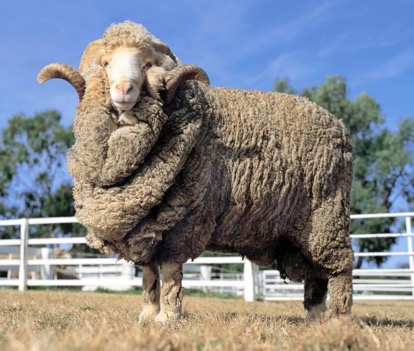Updated Merino Wool Base Layer Blog
Wiki Article
Why Are The Base Layers Made Of Yak Merino A Great Material For Winter Sportswear?
It is a great base layer for winter sports because of the advantages that both the yak and merino wool offer. It has hollow fibers that trap air, providing excellent insulation. The fabric is made warmer by Merino, a material with excellent insulation properties.
Merino wool is moisture-wicking, that means it draws the body's moisture away and release it back into the air. This helps keep your body dry. Yak also has the same capability of wicking moisture like Merino. This helps regulate body's temperature by removing moisture from the skin while engaging in intense physical exercises during cold temperatures.
Merino wool's softness as well as its comfort is well-known. The fine fibers and softness the wool makes it less prone to causing irritation. The fabric created when yak fibers are mixed with the soft and smooth fibers of merino wool feels very soft on the skin.
Odor Resistant: Merino and yak wool both have antimicrobial properties which help to prevent the development of the bacteria that produce the odor. This feature keeps the garment fresher for longer periods even after prolonged use.
Durability. Yak Wool is naturally robust. It can stand up to the wear associated with outdoor and sports.
Temperature Regulation The insulating characteristics of yak merino wool base layers help regulate body temperature, keeping wearer warm in cold temperatures and breathable enough to prevent overheating during periods of high activity.
Merino wool or yak wool as well as other renewable, biodegradable fibers are sustainable and eco-friendly for winter sportswear.
This combination of qualities makes yak Merino Wool Base Layers very effective winter sportswear. They offer warmth, comfort, and moisture control for outdoor activities in cold climates. Follow the best koraoutdoor.com winter clotihng for website info including heavyweight merino wool base layer, ski base layer womens, merino wool base layer pant, ll bean merino wool base layer, wool layers, ice breaker thermals, patagonia merino wool base layer, smartwool merino 250, merino wool base layer women's sale, merino wool long underwear and more.

What Are The Advantages To Bamboo Clothing When It Comes To Thermal Regulation? Uv Protection. Biodegradability. Environmental Impact.
Thermal Regulation- Bamboo clothing has many advantages, including protection from UV rays, biodegradability, and environmental impact.
Bamboo fabric provides insulation. It has natural thermal regulating properties that allow for warmth in colder weather. It regulates body temperature by retaining the heat in cooler temperatures and also allowing airflow to avoid overheating during exercise.
UV Protection
UV Resistant- The bamboo fabric is a natural shield against harmful UV rays. It can provide an additional layer to protect against sun exposure by blocking a significant amount of ultraviolet rays.
Biodegradability-
Eco-friendly- Bamboo clothing is biodegradable, meaning it is able to break into pieces naturally at the end of its life cycle without leaving harmful residues behind or contributing to environmental pollution. This feature reduces garbage and reduces the environmental impact of discarded clothes.
Environmental Impact-
Bamboo is a very durable raw material. It is a fast-growing plant which does not require chemical fertilizers or pesticides. It's a renewable resource because of its fast development.
Bamboo makes use of less water than other crops such as cotton. It is a more water-efficient crop. This contributes to water conservation and reduces the pressure on resources.
Soil Conservation
Soil Health Bamboo farming doesn't generally deplete soil's nutrients, nor do they require excessive irrigation. This leads to healthier soils, and decreases the risk of the risk of harmful agricultural practices.
Carbon Sequestration
Carbon Absorption- Bamboo has the ability to absorb and release CO2 more effectively than other plants. This ability is advantageous in the fight against carbon emissions and climate change.
Bamboo clothing's thermal regulation the ability to regulate temperature, UV protection, biodegradability, and positive environmental impact make it an a desirable choice for people who are looking for sustainable and practical clothes. These qualities match up with environmentally friendly practices, which benefit both the wearer as as the natural environment. Have a look at the top https://www.koraoutdoor.com/collections/bamboo/ for website advice including bamboo t shirts mens, onno bamboo shirts, bamboo button down shirts, mens bamboo boxer shorts, bamboo tank tops, bamboo t shirts womens, bamboo mens shirts, bamboo exercise clothing, bamboo childrens clothing, bamboo pants for women and more.

What Are The Differences In The Texture, Warmth And Moisture Absorption Of Bamboo Or Merino Compare To That Of Wool?
In comparing merino wool bamboo clothing, and traditional wool on the basis of texture, warmth and moisture absorption- Texture-
Merino Wool Merino Wool, also known as fine-fibered wool, is known for it's softer texture and smoother fibers. It's also thought to be more comfortable to wear.
Bamboo ClothingBamboo fabric is silky smooth and often compared to luxurious materials such as cashmere or silk. It is smooth and soft feel, offering the wearer with a pleasant experience.
Traditional Wool: Traditional wool is available in a variety of different textures. Some are coarser than others, and can cause discomfort or itchiness.
Warmth-
Merino Wolle Merino fibers are great insulators and give warmth. Even when it is damp it maintains warmth and offers effective insulation during frigid weather conditions.
Bamboo Clothing offers warmth but may not provide the same insulation as Merino wool. Bamboo clothing regulates body temperature well and is comfortable in any conditions.
Traditional Wool: Like merino wool, merino offers warmth, insulation and comfort. However, it can sometimes feel bulkier or heavier than bamboo or merino clothes.
Moisture Absorption-
Merino Wool Merino Wool is an organic fiber that has outstanding moisture-wicking abilities. It draws moisture from the skin, and then allows it to evaporate. It is warm even when it is damp.
Bamboo Clothing Bamboo fabric has water wicking capabilities that means it is able to draw moisture away and offer ease during physical activities. Bamboo clothing regulates humidity and keeps the wearer drier.
Traditional Wool: While wool absorbs moisture but it doesn't have the same wicking ability like bamboo and merino fabrics. Certain kinds of wool feel heavy or damp when they are wet.
Merino is considered to be an extremely warm and soft material that has excellent moisture wicking properties. Bamboo clothing has smooth, silky texture that provides adequate moisture and warmth. The texture of wool is variable and can be used to provide warmth, moisture absorption and an incredibly soft feeling. But it could feel more coarse and heavy in comparison with merino clothing or bamboo clothing. Each type of material has its own characteristics which cater to different clothes preferences and needs. See the top rated bamboo winter clothing url for more advice including merino thermals, 400g merino wool base layer, ski base layer mens, merino wool base layer sale, best base layer for skiing women's, merino wool long underwear women's, best long underwear for skiing, wool long underwear mens, smartwool base layer sale, smartwool mid layer and more.
